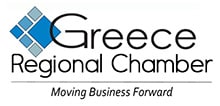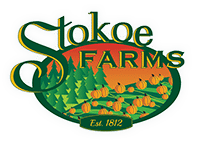By Valerie Volcovici
WASHINGTON (Reuters) – The Federal Energy Regulatory Commission (FERC) is expected on Monday to issue a final rule to address the crunch in U.S. electricity transmission as the grid struggles to connect enormous amounts of clean power while demand surges.
The long-awaited rule will attempt to ensure that a dozen fragmented U.S. regions adopt long-term plans to bring more transmission online. It will seek to coordinate state and local regulations and utility plans on ways to split costs among states for the build-out.
President Joe Biden’s administration has a goal of a carbon-free power sector by 2035. To meet that, the country needs to more than double regional transmission capacity and expand interregional transmission capacity more than fivefold, a U.S. Department of Energy study said in November.
The U.S. also needs to reverse a steady decline in transmission investments, the study said.
WHY IS THIS RULE IMPORTANT?
Boosted by tax incentives in Biden’s 2022 Inflation Reduction Act, the queue of power generation projects awaiting a connection to the electric grid is currently around 2,600 gigawatts, twice the amount of generation of the current U.S. power plant fleet.
Princeton University researchers have found that the rate of transmission construction must double that of the last decade or at least 80% of the potential emissions reductions enabled by the IRA will be lost.
Meanwhile, power demand is surging.
“The situation at hand is a spike in demand, driven not only by the electrification of key industries, such as mobility, but by technology advancements like AI (artificial intelligence) and the accelerated development of data centers,” said Allie Kelly, executive director of The Ray, a nonprofit focused on sustainable infrastructure.
The U.S. transmission is also susceptible to increasingly intense storms and heatwaves, making investment in a more durable system important.
WHAT WOULD THE RULE DO?
The rule, as initially proposed, would force states, regional transmission organizations and utilities to work together on 20-year plans for approving new transmission projects.
It would also likely require planners to establish a clear process for how transmission lines are selected and paid for by consumers across states.
Some have called for the rule to define who the beneficiaries of a transmission project would be.
Some regional organizations like the Midcontinent Independent System Operator in the Midwestern U.S. have already begun transmission planning and started new projects while others lag. The rule is expected to force all regions to take steps to ensure they can meet U.S. transmission needs.
“The goal is to stimulate more transmission investment from the utility industry and push them to consider long-term changes in terms of clean energy and demand growth,” said Ari Peskoe, director of the Electricity Law Initiative at Harvard Law School.
WHO IS RESISTANT TO THESE CHANGES?
Some utilities and Republican states have opposed the idea of FERC dictating cost-sharing for large projects and that some states would need to pay for transmission for another state’s clean energy policies.
WHAT ELSE IS THE ADMINISTRATION DOING ON TRANSMISSION?
The DOE has recently unveiled new measures aimed at boosting U.S. transmission capacity. Last month, it said it will upgrade 100,000 miles (160,930 km) of transmission lines over the next five years and the administration finalized a rule aimed at making federal permitting of new transmission lines more efficient.
Energy Secretary Jennifer Granholm said the DOE would also direct over $330 million to support a new 285-mile (460 km) Idaho-Nevada transmission line, which will bring 2,000 Megawatts of transmission capacity to the West.
This week, the DOE designated 10 regions that lack access to electricity where it will fast track permitting to expand transmission lines and direct billions of dollars in federal loans.
(Reporting by Valerie Volcovici; editing by Timothy Gardner and David Gregorio)
Brought to you by www.srnnews.com





















